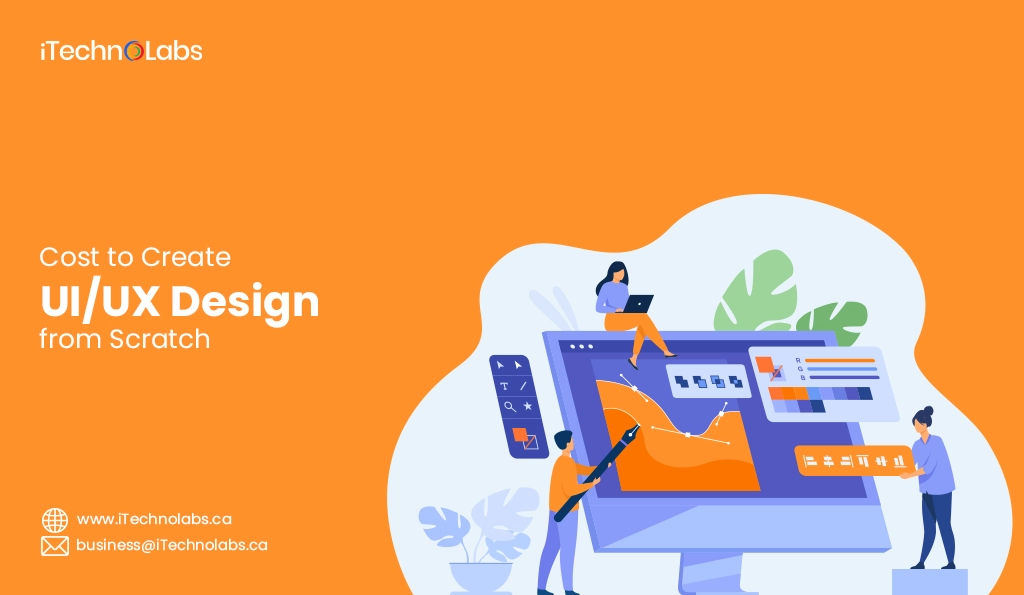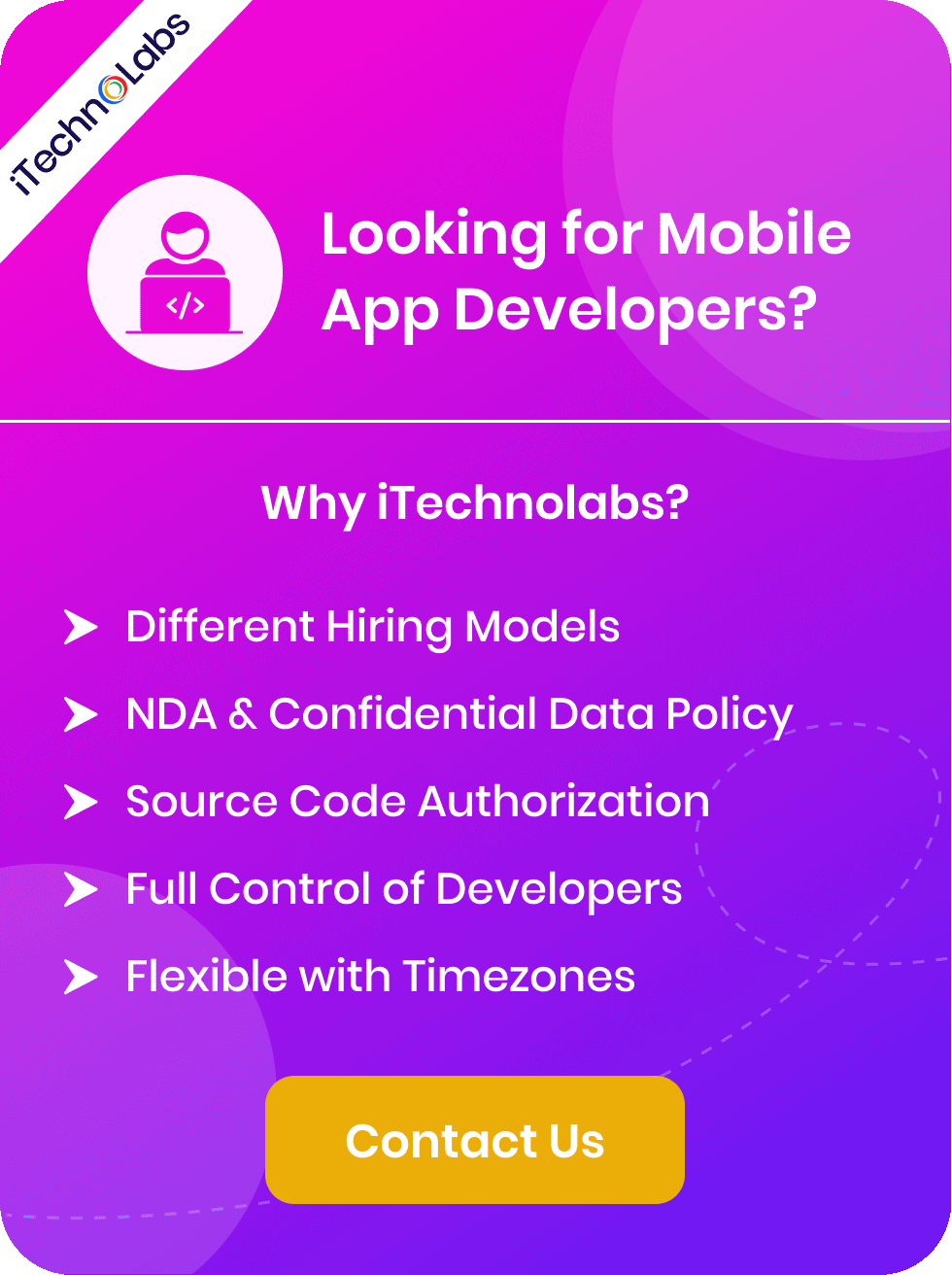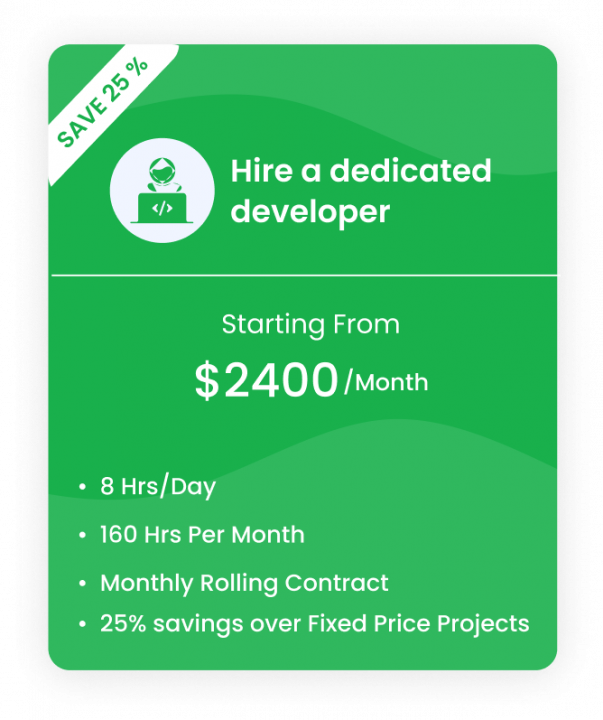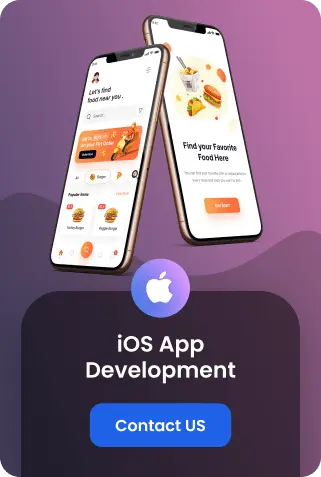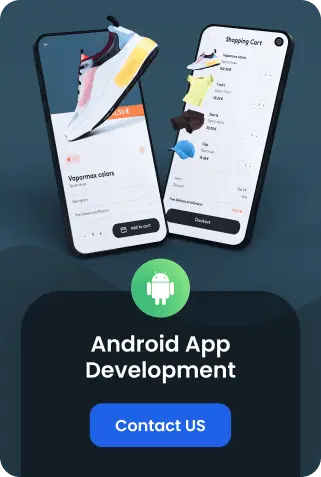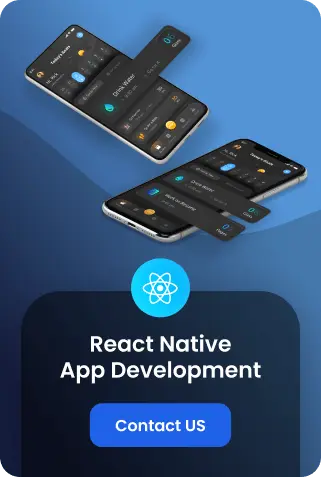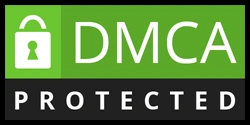UI/UX design is an indispensable element in the development of any digital product or service, representing a crucial phase that involves an intricate and thoughtful process of crafting a visually appealing and user-friendly interface. This design process is dedicated not solely to enchanting users with its visual allure but also to ensuring they enjoy a fluid and straightforward interaction with the product. The aim is to create an experience that feels intuitive and natural, minimizing user effort and maximizing satisfaction.
The importance of meticulously planned and executed UI/UX design cannot be emphasized enough. It plays a pivotal role in enhancing user satisfaction and boosting engagement rates, which are key indicators of a product’s success. A well-designed interface can make the difference between a product that captivates and retains users and one that fails to make a mark. Moreover, exceptional UX/UI design contributes significantly to building a brand’s reputation, as it reflects the company’s commitment to quality and user-centricity.
However, the path to realizing a refined and efficient design is not without its challenges. It demands a substantial commitment in terms of time, financial resources, and specialized expertise. Designers must navigate through various stages, from research and prototyping to user testing and final adjustments, each requiring meticulous attention to detail and a deep understanding of user needs and behaviors.
Despite the hurdles and the potential costs involved, the long-term benefits of investing in top-notch UI/UX design are vast. Not only does it provide a product with a competitive advantage in today’s crowded market, but it also cultivates a positive and lasting relationship between the product and its users. High-quality design fosters loyalty and trust, encouraging users to return and engage with the product over time. In effect, the investment in exceptional UI/UX design pays dividends far beyond its initial cost, securing a product’s position and success in the marketplace.
Key takeaways
- User-centric design is Crucial: The effectiveness of a product in the market is significantly enhanced by a focus on user satisfaction and engagement, made possible through exceptional UI/UX design.
- Brand Reputation: A sophisticated and user-friendly design is not just about the product itself, but also acts as a reflection of the company’s commitment to quality and customer-centricity, thereby influencing the brand’s overall perception in the market.
- Investment in Design Pays Off: Despite the challenges, including the need for time, money, and specialized skills, the investment in high-quality UI/UX design yields substantial long-term benefits, including a competitive edge and fostering user loyalty.
- Overcoming Design Challenges: Achieving a refined and efficient design involves navigating through various stages like research, prototyping, and user testing, which demand a deep understanding of user needs and meticulous attention to detail.
- Creating Lasting User Relationships: High-quality UI/UX design cultivates a positive relationship between the product and its users, encouraging loyalty and repeat engagement, ultimately securing the product’s success in the marketplace.
How does website design compare to app design?
| Criteria | Website Design | App Design |
| Purpose | Primarily informational, aiming to provide content and services accessible across various devices. | Focused on task-based interactions and providing a seamless user experience for mobile or specific platform usage. |
| User Interaction | Interaction through browsers; users expect fast load times, ease of navigation, and accessibility. | Direct interaction with more touch-based gestures, such as swiping, tapping, and pinching. |
| Design Flexibility | Must be responsive across different devices and screen sizes, adapting layout and content. | More control over design due to a specified platform (iOS, Android), but must adhere to platform-specific guidelines |
| Development Cost | Potentially lower initial development cost due to a single version, but must ensure compatibility across browsers. | Higher initial development cost due to the need for developing multiple app versions for different platforms. |
| Update and Maintenance | Updates can be rolled out instantly visible to users upon refreshing the page or revisiting. | Requires users to download updates, but allows for more sophisticated features and integration with device hardware |
| Reach | Accessible by anyone with internet access, providing a wider immediate audience reach. | Requires users to download the app, potentially limiting initial user base but offering a more personalized experience. |
Also Read: Periscope Business Model: A Live Streaming App
What makes up the cost of UI/UX design
UI/UX design refers to the process of creating and designing the user interface (UI) and user experience (UX) of a digital product or service. This includes all elements that a user interacts with, such as buttons, menus, forms, and overall visual design.
The cost of UI/UX design can vary depending on several factors. Here are some key components that contribute to the overall cost:
Factor 1. Feature planning
The initial step in any UI/UX design process involves a detailed determination of the product’s features and functionalities. This foundational phase is crucial as the complexity and extent of the features directly influence both the duration and the cost of the design and implementation phases. More complex and extensive features will invariably require a longer time to meticulously design and seamlessly implement, which in turn escalates the overall project costs. Therefore, businesses must engage in careful and thorough planning of their desired features right from the outset. By doing so, they can not only ensure that their product meets their vision but also optimize cost-effectiveness, striking a balance between innovation and budget constraints. This strategic planning phase is a key determinant of the project’s success, influencing not just the user experience but also the financial viability of the product.
Factor 2. Number of features
The cost associated with UI/UX design is significantly influenced by the number of features a product or service incorporates. Essentially, the more features there are, the greater the amount of time and effort needed to develop an intuitive and user-friendly interface for each one. This complexity arises because each feature must be seamlessly integrated into the overall design in a way that enhances user interaction and satisfaction.
For businesses, it’s imperative to conduct a thorough analysis to determine which features are absolutely essential for their product and to order them by priority. This careful selection and prioritization process is critical not just for managing development costs but also for ensuring the product offers a cohesive and enjoyable user experience. An overloaded or overly complex interface can deter users, as it can make navigation and interaction unnecessarily difficult and frustrating.
Moreover, focusing on the most impactful features allows designers to allocate more resources toward optimizing the usability and aesthetic appeal of those elements, ultimately contributing to a product that feels more polished and thoughtfully crafted. This approach not only helps in controlling the budget but also plays a vital role in building a product that truly resonates with users and meets their needs straightforwardly and efficiently.
Factor 3. Feature complexity
Another aspect that affects the cost of UI/UX design is the complexity of features. Complex and intricate features require more time, effort, and technical expertise to design and implement compared to simpler ones. This directly impacts the overall development cost as it often requires additional resources or specialized skill sets.
Businesses must carefully evaluate whether complex features are truly necessary for their product or if they can achieve the desired outcome through simpler and more user-friendly alternatives. This not only helps to control the development costs but also ensures that the final product is intuitive and accessible to a wider audience.
Furthermore, complex features may also require additional maintenance and updates in the long run, which adds to the overall cost of ownership for businesses. By prioritizing simpler and more streamlined features, businesses can not only save on costs but also improve the overall user experience and reduce potential maintenance burdens in the future.
Factor 4. Complexity of design elements
The cost of UI/UX design also depends on the complexity of individual design elements within a product. As with feature complexity, intricate and detailed design elements require more time and effort to create compared to simpler ones.
Complexity in design can refer to various aspects such as color schemes, typography, layout, animations, and illustrations. Each of these elements requires a different level of skill and attention to detail, which can significantly impact the cost of design.
Businesses must also consider the level of customization required for each element. Customized designs often require more time and effort compared to using pre-designed templates or existing design elements. While customized designs may enhance the uniqueness and branding of a product, it is essential to weigh the added cost against the potential benefits.
Factor 5. Expertise of your UI/UX design team
The expertise and skill level of the UI/UX design team hired by a business plays a pivotal role in influencing the overall cost of UI/UX design. It’s a well-acknowledged fact that experienced designers, who boast a strong portfolio and a proven track record of successful projects, typically command higher fees compared to their junior counterparts or freelancers who may still be building their experience and portfolio. This price variation is reflective of the value that seasoned professionals bring to a project, including a deeper understanding of user behavior, creative problem-solving skills, and the ability to foresee and mitigate potential design challenges.
Moreover, if the project entails specialized skills such as conducting comprehensive user research, performing detailed usability testing, or implementing complex interaction designs, businesses may find themselves in need of hiring additional experts. These specialists, who bring a focused skill set necessary for the nuanced aspects of UI/UX design, can further elevate the cost. Engaging experts in these areas ensures that the design not only looks good but also performs well in real-world scenarios, providing an optimal experience for the end-user.
However, it’s important to recognize the long-term benefits that investing in a highly skilled and experienced UI/UX design team brings to a business. Superior quality design not only meets the immediate needs of users but also anticipates future trends, setting a solid foundation for growth and innovation. Efficient problem-solving throughout the design process can save businesses time and resources, avoiding costly redesigns or adjustments post-launch.
How to estimate the price of a UI/UX project
When it comes to estimating the price of a UI/UX project, businesses should consider several factors to get an accurate cost estimation. These factors include:
Step 1. Plan out epics
The initial phase in accurately predicting the cost of a UI/UX project involves meticulously planning out all of the significant features and functionalities destined to be incorporated into the design. This crucial step can be effectively accomplished by crafting epics. Epics are essentially high-level user stories that encapsulate the core elements of the project, serving as a blueprint for the entire design process. By fleshing out these epics with as much detail and comprehensiveness as possible, businesses can gain a much clearer and more thorough understanding of the exact requirements that need to be designed and developed. This, in turn, significantly enhances the precision of the cost estimation process. Moreover, detailed epics help in identifying potential challenges and resource needs early on, facilitating a smoother project flow and reducing the likelihood of unexpected expenses. Thus, the diligence invested in this planning stage is pivotal in ensuring that businesses can allocate their budget more effectively, leading to a well-executed UI/UX project.
Step 2. Identify user stories and states
After defining the epics, businesses should focus on breaking down these high-level user stories into smaller, more tangible components in the form of user stories and states. These are essentially detailed scenarios that describe how users will interact with the product, outlining their goals, actions, and expected outcomes. By thoroughly examining each user story and state, businesses can better understand the scope and complexity of the design project, allowing them to allocate resources more efficiently.
Furthermore, user stories and states provide a clear roadmap for the development team, enabling them to create a product that aligns with the needs and expectations of end-users. This detailed level of planning also helps in minimizing unnecessary features and functionalities, streamlining the design process, and reducing development costs.
Step 3. Estimate a timeframe
After the user stories and states are meticulously identified, the subsequent vital step encompasses estimating a timeframe for the completion of each task. This complex process involves segmenting the project into manageable chunks. It requires the assignment of estimated timeframes for each task, which are meticulously calculated based on the complexity and priority of each task, followed by the crafting of a comprehensive timeline that outlines the trajectory of the entire project.
The significance of accurately estimating a timeframe cannot be overstated. By doing so, businesses can set realistic expectations with stakeholders and clients concerning the delivery timeline of the project. This step is paramount not only for maintaining transparency but also for cultivating trust and credibility. Furthermore, an accurate timeframe estimation facilitates better budgeting and resource allocation. It empowers project managers to allocate financial and human resources more effectively, thereby preventing delays that could derail the project and mitigating the risk of potential scope creep. This strategic planning ensures the smooth execution of projects, contributing to the overall success and satisfaction of all parties involved.
3 design project examples with prices
Financial mobile app
Developing a financial mobile app is an intricate endeavor that demands thorough planning, sophisticated design, and meticulous development. The process includes crafting a user-friendly interface that not only facilitates secure and seamless financial transactions but also offers personalized dashboards. These dashboards are essential for users to effectively track their expenses and income, ensuring they have a clear overview of their financial health. Additionally, the app must provide real-time updates on investments and stock market fluctuations, allowing users to make informed decisions swiftly. To incorporate these features and ensure a high level of security and performance, the estimated timeframe for the design and development phase of such an app typically ranges from 6-10 months, depending on the complexity and specific requirements of the project. This timeline allows for rigorous testing and refinements to create an app that meets the expectations of its users in managing their financial activities efficiently.
Currency converter web app
A currency converter web application is an indispensable tool for both travelers and businesses engaging in international transactions. The development of such an app necessitates the integration of real-time exchange rates to provide the most current information, encompassing a wide array of currencies and offering diverse conversion options to meet various needs. To ensure an optimal user experience, the app’s design must be intuitive and user-friendly, facilitating quick and precise currency conversions with minimal user input.
The development process of a currency converter web app is intricate, involving extensive research to guarantee the incorporation of accurate and up-to-date financial data. Additionally, comprehensive testing is crucial to ensure the app’s seamless functionality across a variety of devices and web browsers, thereby catering to a broad user base. Factors such as the app’s ability to automatically update exchange rates, its compatibility with different operating systems, and the inclusion of user-centric features like saving frequently used currencies or conversion amounts add to the complexity of the project.
Calorie counting website
A calorie counting website is a valuable tool for individuals looking to monitor their daily intake and maintain a healthy lifestyle. The development of such a website entails the integration of a food database to provide an extensive list of foods and their corresponding nutritional values. Additionally, features like meal tracking, progress monitoring, and personalized recommendations based on dietary goals require careful consideration during the development process.
To ensure user satisfaction, the website’s design should be visually appealing and easy to navigate. This includes incorporating an intuitive interface with smooth functionality across different devices and browsers. The accurate calculation of calories and nutrients from a variety of food options is crucial for the credibility and reliability of the website.
Read More: How to Create a Web Application
Steps to create UI/UX design
Creating a user-friendly and visually appealing UI/UX design for a website or app is crucial to its success. Here are the steps involved in the process:
Conduct market research and competitor analysis
Before diving into the design process, it’s crucial to embark on thorough market research and conduct an in-depth analysis of competitors’ websites or apps. Doing so will arm designers with a deep understanding of the target audience, including their specific preferences, behaviors, and needs. Additionally, this preliminary research phase will uncover any existing gaps or unmet needs within the market that the new design could potentially fill. By gaining this insight, designers can tailor their approach to more effectively meet user expectations and create a product that stands out in a crowded marketplace.
Gather references and create a mind map
Once the research phase is concluded, designers have the opportunity to gather a wealth of inspiration and references to inform their design process. This collection phase could involve curating examples of successful websites or mobile applications that boast similar functionalities, appealing color schemes, or layouts that resonate with the overarching vision of the project at hand. By analyzing these precedents, designers can extract valuable insights and best practices to apply to their work. Additionally, the creation of a mind map serves as an effective strategy to organize these myriad ideas. It acts as a visual tool that enables designers to structure their thoughts, outline the connections between different concepts, and visualize the overall architecture of the design. This preparatory step is crucial in laying a solid foundation for the creative process, ensuring that the final design is both coherent and aligned with the project’s objectives.
Create wireframes
Once the initial research and ideation phase is complete, designers can begin to create wireframes. These are simple, stripped-down visual representations of the design concept, typically created using digital tools such as Adobe XD or Figma. Wireframes are essential in determining the layout and structure of a website or application, as they allow designers to map out how different elements will be organized on the screen. This stage is crucial in identifying potential usability issues and making any necessary adjustments before proceeding to the next step.
Make a solid design concept
Once the wireframes have been meticulously crafted and refined through rounds of feedback and iteration, designers are poised to transition toward crafting a robust design concept. This pivotal stage is where the magic happens, as designers harmonize all the individual elements, weaving together color schemes, typography choices, imagery, and other visual components to forge a design that’s not only cohesive but also aesthetically captivating. It’s crucial at this juncture for designers to keep the project’s overarching goals and the preferences of the target audience at the forefront of their minds. They must ensure that every design decision, from the selection of a color palette that resonates with the audience to the choice of typography that enhances readability and appeal, aligns with these objectives. The ultimate aim is to craft a design that not only effectively communicates the intended message but also facilitates a seamless and engaging user experience. This meticulous process demands a keen eye for detail, a deep understanding of user psychology, and a creative flair to blend form with function, ensuring that the final design is both beautiful and purposeful.
Create prototypes
Once the design concept has been finalized and approved, designers move on to creating interactive prototypes. This step involves translating the static design into a dynamic and functional representation of the final product. Prototyping allows designers to test their designs in a realistic setting, enabling them to refine any elements that may not function as intended or may not resonate with users. It’s an iterative process that involves creating multiple versions of the prototype, each time incorporating feedback and making improvements until the design meets the desired standards.
Finish the design and create a UI kit
Once the prototype has been tested and refined, it’s time to finalize the design. This involves adding final touches such as animations, transitions, and responsive layouts to ensure that the design looks great on all devices. It also involves creating a UI kit or style guide that outlines the visual elements of the design, including fonts, colors, button styles, and other important design details. The UI kit serves as a reference for developers and other team members to ensure that the final product is consistent with the design.
How to hire web designers
Hiring the right web designer is crucial for the success of any project. Here are some tips to help you find the perfect designer for your needs:
Hiring freelancers
If you’re on a tight budget or have a small project, hiring a freelance web designer can be a cost-effective option. To find the right freelancer, you can browse through online platforms such as Upwork, Fiverr, or Freelancer and look for designers with good reviews and portfolios that match your design needs. Make sure to thoroughly communicate your requirements and expectations before hiring a freelancer.
Hiring a local agency
If your project is sizable or if you have a preference for collaborative endeavors, opting to hire a local web design agency could be the most advantageous route for you. Begin by conducting a thorough search for reputable agencies within your vicinity. Once you’ve identified potential candidates, take the initiative to arrange meetings with them. These meetings are a pivotal opportunity to articulate the specifics of your project needs and to also view their portfolio of previous work. Engaging with an agency in this manner fosters an environment ripe for enhanced collaboration and communication, ensuring your vision is accurately brought to life through the design process. This approach not only streamlines the development of your project but also builds a foundation for a potentially lasting professional relationship.
Outsourcing
Outsourcing web design can be a highly effective strategy for companies that have a larger budget and face complex project requirements. This often involves engaging a web design company or agency that operates out of another country or region, far from the company’s home base. The primary advantage of opting for outsourcing is the access it grants to a broader spectrum of highly talented designers, who might otherwise be unavailable or significantly more expensive in the company’s local market. This can lead to potentially lower costs without compromising on the quality of design work.
However, opting to outsource web design projects does come with its own set of challenges, primarily in the areas of communication and collaboration. Differences in time zones, cultural nuances, language barriers, and the lack of face-to-face interaction can sometimes hinder the smooth flow of information and ideas. These challenges necessitate the importance of establishing clear, effective communication channels and setting realistic timelines that account for these differences.
How long does UI/UX design take
| Design Phase | Duration | Notes |
| Research | 1-2 weeks | Includes market research, user interviews, and personal development. |
| Planning and Conceptualization | 1-3 weeks | Involves sitemap creation, wireframing, and defining user flow. |
| Design Iteration | 2-4 weeks | Development of the actual UI elements, adhering to design principles and user feedback. |
| Prototyping and Testing | 2-3 weeks | Creation of interactive prototypes followed by user testing to gather feedback and refine |
| Finalization and Handoff | 1-2 weeks | Final adjustments based on feedback, creation of design specifications for the development team. |
How much does it cost to build UI/UX Design?
The cost to build UI/UX design can vary significantly depending on the project’s complexity, the design agency’s expertise, and the geographical location. For small to medium-sized projects, the design phase can range from $5,000 to $20,000. For larger, more complex projects, especially those requiring extensive user research, intricate interfaces, and multiple iterations, costs can escalate to $50,000 or even higher. It’s crucial for businesses to consider not just the initial design costs but also the long-term value of creating a user-centric design that enhances user satisfaction and engagement.
- Small to Medium-Sized Projects: $5,000 – $20,000
- This range covers basic UI/UX design needs, including initial research, simple interfaces, and a few iterations of design.
- Large, Complex Projects: Starting at $50,000
- Complex projects may involve extensive user research, sophisticated interface designs, multiple iterations based on user feedback, and potentially higher costs for top-tier agency expertise.
- Factors Influencing Cost:
- Project Complexity: More complex projects require more time and resources, increasing the cost.
- Agency’s Expertise: High-end agencies with exemplary portfolios and recognized industry expertise may charge more.
- Geographical Location: Costs can also vary significantly depending on the location of the design agency, with agencies in major metropolitan areas usually charging more.
- Long-Term Value:
- Investing in quality UI/UX design upfront can lead to better user satisfaction and engagement, potentially reducing the need for costly redesigns and updates in the future.
Suggested: How Much Does it Cost to Create An App
How can iTechnolabs help you to build UI/UX Design?
iTechnolabs is a highly experienced and skilled agency that can help you create top-notch UX/UX designs for your business. With our team of talented designers, we can work with you to understand your unique business needs, target audience, and brand identity to create a design that truly represents your company.
Our process involves conducting thorough user research to gain insights into the behavior and preferences of your target audience. This helps us create designs that are not only visually appealing but also highly intuitive and user-friendly.
- Customized Design Solutions: iTechnolabs tailors its design strategies specifically to your business’s goals, ensuring a unique and effective UI/UX.
- Expert Design Team: Our team comprises seasoned professionals with a deep understanding of design principles and user experience trends.
- User-Centric Approach: By focusing on the end-user, we create designs that enhance user satisfaction and engagement.
- Comprehensive Research: We conduct exhaustive research into your target audience and their preferences to inform our design process.
- Iterative Design Process: iTechnolabs believes in refining its designs through continuous feedback and iterations, ensuring the final product meets your exact needs.
- Technological Proficiency: Our expertise in the latest design technologies and tools means your UI/UX is modern, efficient, and scalable.
- Competitive Analysis: We analyze your competitors to ensure your UI/UX stands out in the market, offering unique value to users.
- Ongoing Support: After the project’s completion, iTechnolabs provides support and advice to ensure your UI/UX remains effective and up-to-date.
Are you planning to build a UI/UX design?
Choosing iTechnolabs for your UI/UX design needs comes with a host of benefits that can significantly elevate your digital presence and user satisfaction. Our customized and user-centric approach ensures that each design is tailored specifically to meet the needs of your business and your audience, offering a seamless and intuitive user experience. With our expert team utilizing the latest technologies and design trends, your product not only stands out in a crowded marketplace but is also future-proof, scalable, and efficient. Our commitment to iterative design processes and comprehensive research means that the final product is not only visually appealing but deeply aligned with user expectations and behaviors, ensuring higher engagement and satisfaction. Furthermore, our ongoing support guarantees that your UI/UX design remains relevant and effective, constantly evolving with market trends and customer feedback. Partnering with iTechnolabs means investing in a design that truly understands and meets the needs of your users, ensuring long-term success and satisfaction.
- Customized Designs: iTechnolabs offers tailor-made UI/UX designs that are specifically crafted to meet the unique needs of your business and target audience, ensuring a highly effective and personalized user experience.
- Future-Proof Solutions: With a focus on using the latest technologies and design trends, our designs are not just relevant today but are made to be scalable and adaptable for future advancements, ensuring long-term viability.
- User-Centric Approach: Every design choice is made with the end-user in mind, aiming for an intuitive, seamless experience that enhances user satisfaction and engagement.
- Competitive Edge: Through thorough competitive analysis, iTechnolabs ensures your product stands out in the market, offering distinctive features that cater to your users’ needs better than your competitors.
- Expert Team: Our team of experts is proficient in the latest design tools and methodologies, bringing both creativity and technical know-how to deliver high-quality, efficient UI/UX designs.
- Iterative Process: Engaging in an iterative design process allows for continuous refinement based on user feedback and behavioral data, ensuring the end product closely aligns with user expectations.
- Comprehensive Research: We employ comprehensive research strategies to understand your business, users, and market trends, ensuring the design is not only visually appealing but also functionally relevant.
- Ongoing Support and Advice: Post-launch, iTechnolabs continues to provide support and advice, helping you to keep your UI/UX design updated with the latest trends and user requirements, ensuring sustained user satisfaction and engagement.
Important: An Ultimate Guide Plan to MVP Software Development
Conclusion:
In today’s fast-paced and constantly evolving digital landscape, having a strong and effective UI/UX design is crucial for the success of any product or service. At iTechnolabs, we strive to provide our clients with innovative, user-centric, and future-proof solutions that give them a competitive edge in their respective industries. Our team of experts utilizes an iterative process and thorough research to deliver high-quality designs that not only meet but exceed our clients’ expectations. And even after the launch, we continue to provide ongoing support and advice to ensure that our clients’ UI/UX designs remain relevant and user-friendly. Trust iTechnolabs for all your UI/UX design needs and let us help you create an exceptional digital experience for your users.
